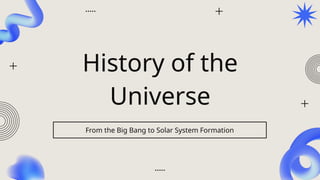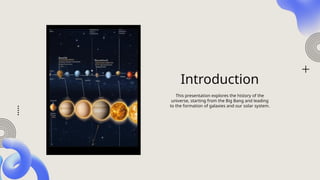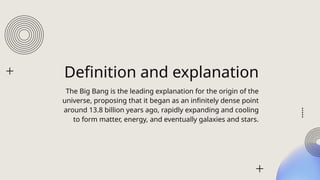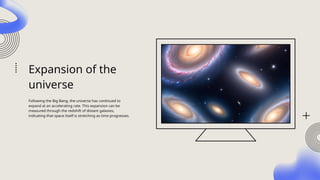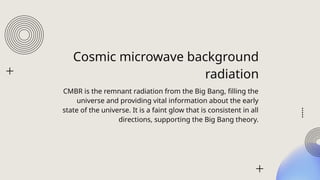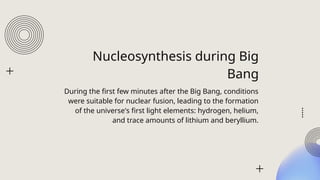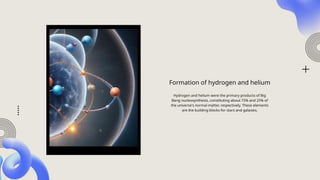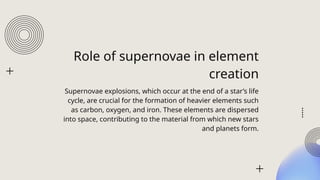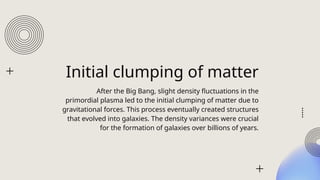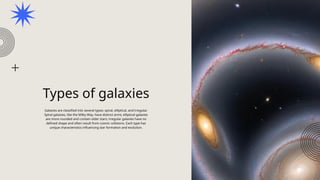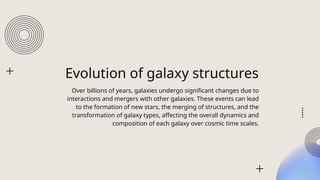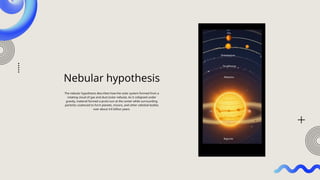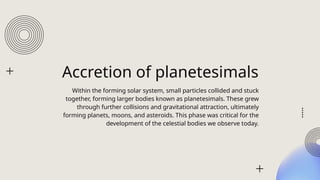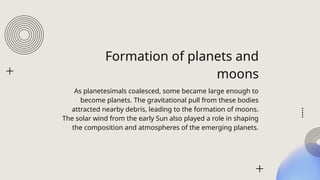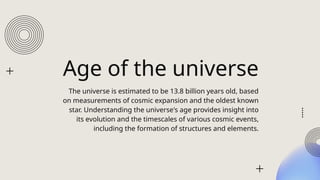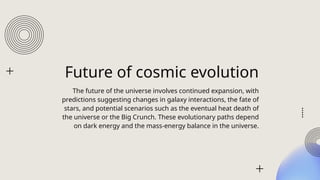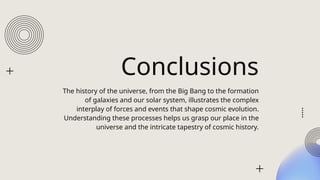IObit Driver Booster Pro Crack + Serial Key Free Download
- 1. History of the Universe From the Big Bang to Solar System Formation
- 2. Introduction This presentation explores the history of the universe, starting from the Big Bang and leading to the formation of galaxies and our solar system.
- 3. Big Bang 01
- 4. Definition and explanation The Big Bang is the leading explanation for the origin of the universe, proposing that it began as an infinitely dense point around 13.8 billion years ago, rapidly expanding and cooling to form matter, energy, and eventually galaxies and stars.
- 5. Expansion of the universe Following the Big Bang, the universe has continued to expand at an accelerating rate. This expansion can be measured through the redshift of distant galaxies, indicating that space itself is stretching as time progresses.
- 6. Cosmic microwave background radiation CMBR is the remnant radiation from the Big Bang, filling the universe and providing vital information about the early state of the universe. It is a faint glow that is consistent in all directions, supporting the Big Bang theory.
- 8. Nucleosynthesis during Big Bang During the first few minutes after the Big Bang, conditions were suitable for nuclear fusion, leading to the formation of the universe's first light elements: hydrogen, helium, and trace amounts of lithium and beryllium.
- 9. Formation of hydrogen and helium Hydrogen and helium were the primary products of Big Bang nucleosynthesis, constituting about 75% and 25% of the universe's normal matter, respectively. These elements are the building blocks for stars and galaxies.
- 10. Role of supernovae in element creation Supernovae explosions, which occur at the end of a starвҖҷs life cycle, are crucial for the formation of heavier elements such as carbon, oxygen, and iron. These elements are dispersed into space, contributing to the material from which new stars and planets form.
- 12. Initial clumping of matter After the Big Bang, slight density fluctuations in the primordial plasma led to the initial clumping of matter due to gravitational forces. This process eventually created structures that evolved into galaxies. The density variances were crucial for the formation of galaxies over billions of years.
- 13. Types of galaxies Galaxies are classified into several types: spiral, elliptical, and irregular. Spiral galaxies, like the Milky Way, have distinct arms; elliptical galaxies are more rounded and contain older stars; irregular galaxies have no defined shape and often result from cosmic collisions. Each type has unique characteristics influencing star formation and evolution.
- 14. Evolution of galaxy structures Over billions of years, galaxies undergo significant changes due to interactions and mergers with other galaxies. These events can lead to the formation of new stars, the merging of structures, and the transformation of galaxy types, affecting the overall dynamics and composition of each galaxy over cosmic time scales.
- 16. Nebular hypothesis The nebular hypothesis describes how the solar system formed from a rotating cloud of gas and dust (solar nebula). As it collapsed under gravity, material formed a proto-sun at the center while surrounding particles coalesced to form planets, moons, and other celestial bodies over about 4.6 billion years.
- 17. Accretion of planetesimals Within the forming solar system, small particles collided and stuck together, forming larger bodies known as planetesimals. These grew through further collisions and gravitational attraction, ultimately forming planets, moons, and asteroids. This phase was critical for the development of the celestial bodies we observe today.
- 18. Formation of planets and moons As planetesimals coalesced, some became large enough to become planets. The gravitational pull from these bodies attracted nearby debris, leading to the formation of moons. The solar wind from the early Sun also played a role in shaping the composition and atmospheres of the emerging planets.
- 20. Major events and milestones Key events in cosmic history include the Big Bang, formation of the first stars and galaxies, emergence of life on Earth, and the development of complex organisms. These milestones provide a framework for understanding the evolutionary history of the universe and our place within it.
- 21. Age of the universe The universe is estimated to be 13.8 billion years old, based on measurements of cosmic expansion and the oldest known star. Understanding the universe's age provides insight into its evolution and the timescales of various cosmic events, including the formation of structures and elements.
- 22. Future of cosmic evolution The future of the universe involves continued expansion, with predictions suggesting changes in galaxy interactions, the fate of stars, and potential scenarios such as the eventual heat death of the universe or the Big Crunch. These evolutionary paths depend on dark energy and the mass-energy balance in the universe.
- 23. Conclusions The history of the universe, from the Big Bang to the formation of galaxies and our solar system, illustrates the complex interplay of forces and events that shape cosmic evolution. Understanding these processes helps us grasp our place in the universe and the intricate tapestry of cosmic history.
- 24. CREDITS: This presentation template was created by әЭәЭЯЈsgo, and includes icons by Flaticon, and infographics & images by Freepik Thank you! Do you have any questions?
